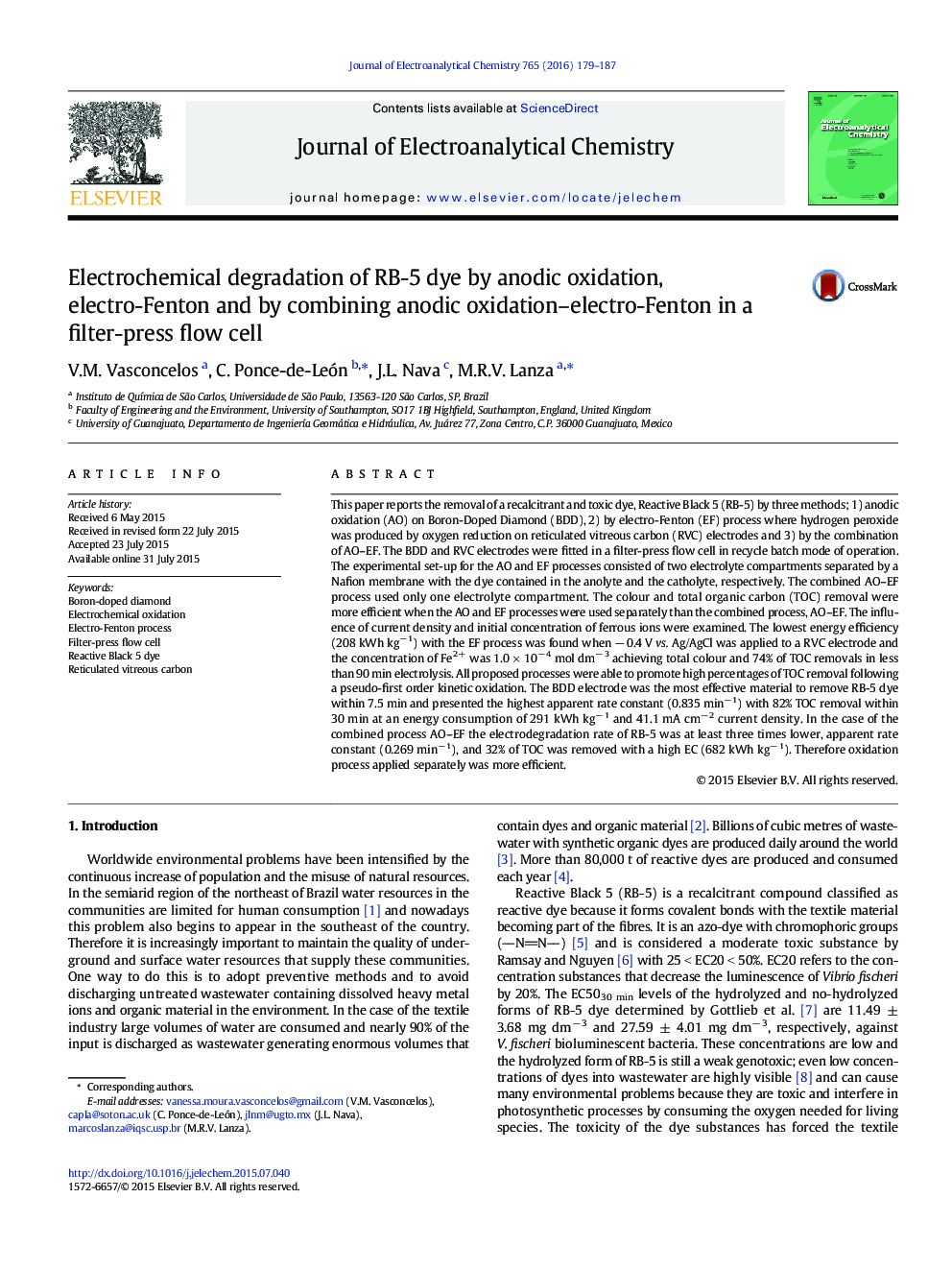| کد مقاله | کد نشریه | سال انتشار | مقاله انگلیسی | نسخه تمام متن |
|---|---|---|---|---|
| 218050 | 463179 | 2016 | 9 صفحه PDF | دانلود رایگان |

• Reactive Black-5 removed with BDD and RVC electrodes and their combination
• BDD electrode removes RB-5 in 7.5 min at high apparent rate constant of 0.835 min− 1.
• 82% TOC removal in 30 min with BDD at Energy Consumption (EC) 291 kWh kg− 1
• 74% TOC removal in 90 min by electro-Fenton at the lowest EC, 208 kWh kg− 1
• All 3 processes promote high TOC removal and follow pseudo-first order kinetic.
This paper reports the removal of a recalcitrant and toxic dye, Reactive Black 5 (RB-5) by three methods; 1) anodic oxidation (AO) on Boron-Doped Diamond (BDD), 2) by electro-Fenton (EF) process where hydrogen peroxide was produced by oxygen reduction on reticulated vitreous carbon (RVC) electrodes and 3) by the combination of AO–EF. The BDD and RVC electrodes were fitted in a filter-press flow cell in recycle batch mode of operation. The experimental set-up for the AO and EF processes consisted of two electrolyte compartments separated by a Nafion membrane with the dye contained in the anolyte and the catholyte, respectively. The combined AO–EF process used only one electrolyte compartment. The colour and total organic carbon (TOC) removal were more efficient when the AO and EF processes were used separately than the combined process, AO–EF. The influence of current density and initial concentration of ferrous ions were examined. The lowest energy efficiency (208 kWh kg− 1) with the EF process was found when − 0.4 V vs. Ag/AgCl was applied to a RVC electrode and the concentration of Fe2 + was 1.0 × 10− 4 mol dm− 3 achieving total colour and 74% of TOC removals in less than 90 min electrolysis. All proposed processes were able to promote high percentages of TOC removal following a pseudo-first order kinetic oxidation. The BDD electrode was the most effective material to remove RB-5 dye within 7.5 min and presented the highest apparent rate constant (0.835 min− 1) with 82% TOC removal within 30 min at an energy consumption of 291 kWh kg− 1 and 41.1 mA cm− 2 current density. In the case of the combined process AO–EF the electrodegradation rate of RB-5 was at least three times lower, apparent rate constant (0.269 min− 1), and 32% of TOC was removed with a high EC (682 kWh kg− 1). Therefore oxidation process applied separately was more efficient.
Figure optionsDownload as PowerPoint slide
Journal: Journal of Electroanalytical Chemistry - Volume 765, 15 March 2016, Pages 179–187